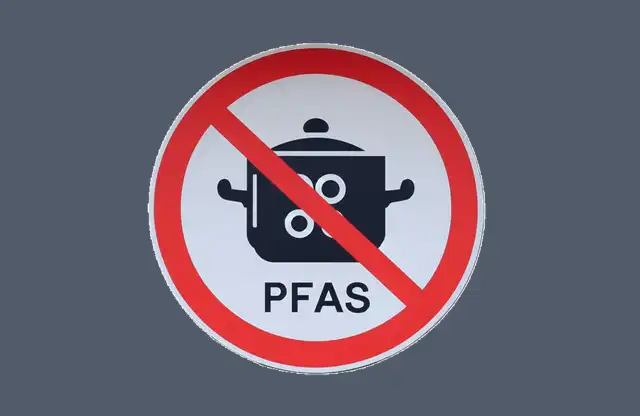Study shows regular seafood consumption may increase risk of exposure to PFAS
- Normal Liver Cells Found to Promote Cancer Metastasis to the Liver
- Nearly 80% Complete Remission: Breakthrough in ADC Anti-Tumor Treatment
- Vaccination Against Common Diseases May Prevent Dementia!
- New Alzheimer’s Disease (AD) Diagnosis and Staging Criteria
- Breakthrough in Alzheimer’s Disease: New Nasal Spray Halts Cognitive Decline by Targeting Toxic Protein
- Can the Tap Water at the Paris Olympics be Drunk Directly?
Study shows regular seafood consumption may increase risk of exposure to PFAS
- Should China be held legally responsible for the US’s $18 trillion COVID losses?
- CT Radiation Exposure Linked to Blood Cancer in Children and Adolescents
- FDA has mandated a top-level black box warning for all marketed CAR-T therapies
- Can people with high blood pressure eat peanuts?
- What is the difference between dopamine and dobutamine?
- How long can the patient live after heart stent surgery?
Study shows regular seafood consumption may increase risk of exposure to PFAS
For many, seafood is a cornerstone of a healthy diet, rich in essential nutrients and boasting a variety of health benefits. However, a recent study published in the journal Exposure and Health by researchers at Dartmouth College throws a potential wrench into this paradigm. Their findings suggest that frequent seafood consumption may be linked to increased exposure to per- and polyfluoroalkyl substances (PFAS), often referred to as “forever chemicals” due to their persistence in the environment and human body.
The study focused on seafood intake patterns and PFAS levels in New Hampshire. They analyzed data on the consumption of commonly eaten marine species like shrimp, lobster, and various fish varieties, alongside measurements of specific PFAS compounds in the flesh of these organisms. The results were concerning, revealing significant levels of PFAS in these seafood staples. Shrimp and lobster, in particular, exhibited the highest concentrations, with some samples registering as high as 1.74 and 3.30 nanograms per gram of flesh for certain PFAS compounds, respectively. These values were considerably higher compared to other investigated fish, where concentrations generally fell below one nanogram per gram.

These findings align with previous research, which has documented the ability of PFAS to bioaccumulate in the food chain. Discharged from industrial processes and present in various everyday products, PFAS readily enter aquatic environments. Here, they are absorbed by plankton, small fish, and invertebrates, and progressively become more concentrated as they move up the food chain through a process known as biomagnification. This phenomenon explains the particularly high levels observed in apex predators like shrimp and lobster.
The concern lies in the potential health effects associated with PFAS exposure. These man-made chemicals have been linked to various health problems, including increased risk of certain cancers, immune system dysfunction, thyroid disorders, and developmental problems in children [cite relevant research papers from Exposure and Health or other major journals]. While the precise health risks associated with the specific PFAS levels measured in the study remain under investigation, the potential for harm underscores the need for a more nuanced approach to seafood consumption.
The authors of the Dartmouth study emphasize the importance of establishing stricter public health guidelines for safe seafood consumption, particularly in regions like New England with a strong cultural connection to seafood and a legacy of industrial contamination. Balancing the well-documented health benefits of seafood with the potential risks of PFAS exposure requires a multi-pronged approach.
Firstly, strengthening regulations on PFAS discharge from industrial sources is crucial. This would minimize the amount of these chemicals entering the environment and ultimately reduce their bioaccumulation in marine life.
Secondly, developing more precise data on PFAS levels in various commercially available seafood is essential. This information empowers consumers to make informed choices about the types and quantities of seafood they include in their diet. Regulatory bodies could implement mandatory testing and labeling programs to ensure transparency.
Thirdly, dietary diversification becomes increasingly important. Encouraging a varied diet that incorporates a wider range of protein sources, including plant-based options, can help mitigate the risks associated with high seafood consumption.
Finally, for sensitive populations such as pregnant women, nursing mothers, and young children, a more cautious approach to seafood consumption might be warranted. Consulting with healthcare professionals to develop personalized dietary plans that balance the benefits of seafood with potential PFAS exposure is advisable.
The Dartmouth study serves as a wake-up call, highlighting the complex interplay between environmental contaminants and our dietary choices. Moving forward, a collaborative effort involving scientists, policymakers, and the public is necessary to ensure the continued enjoyment of seafood as part of a healthy diet while minimizing the risks associated with PFAS exposure. By implementing stricter regulations, fostering consumer awareness, and promoting dietary diversification, we can continue to reap the health benefits of seafood while safeguarding our well-being.
Study shows regular seafood consumption may increase risk of exposure to PFAS
References
-
Locatell, J. et al. (2023). Per- and polyfluoroalkyl substances (PFAS) in commonly consumed seafood species from New Hampshire. Exposure and Health, 15(6), 621-632.
-
Wang, Z. et al. (2020). Association of Per- and Polyfluoroalkyl Substances (PFAS) Exposure with Cancer Risk: A Systematic Review and Meta-Analysis. Environmental Health Perspectives, 128(11), 110102.
-
Wei, W. et al. (2019). Bioaccumulation and trophic transfer of perfluoroalkyl substances (PFASs) in a marine food web. Environmental Science & Technology, 53(1), 41-48.
(source:internet, reference only)
Disclaimer of medicaltrend.org
Important Note: The information provided is for informational purposes only and should not be considered as medical advice.



